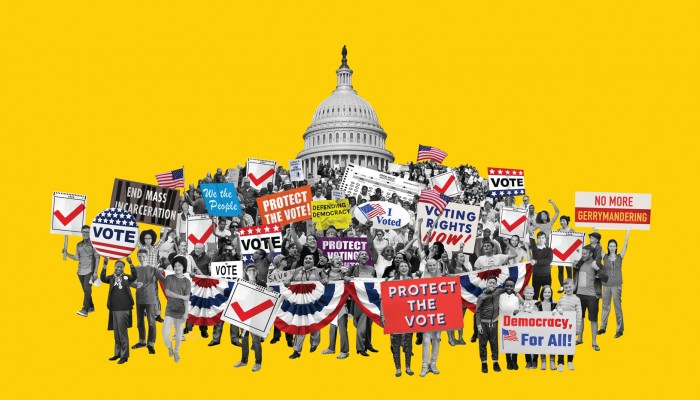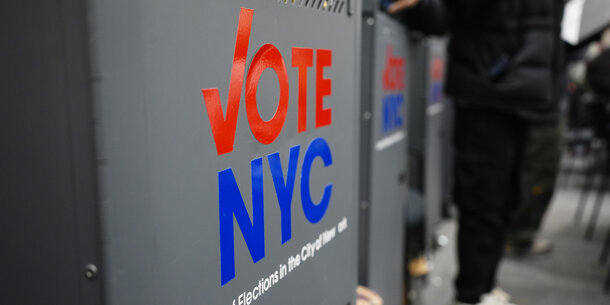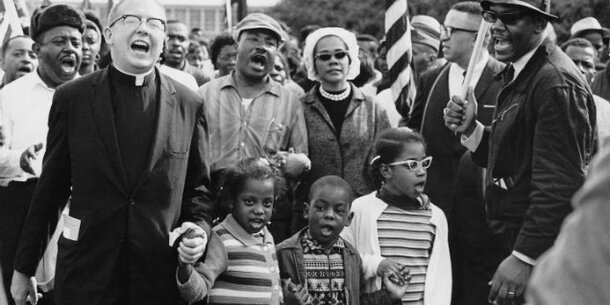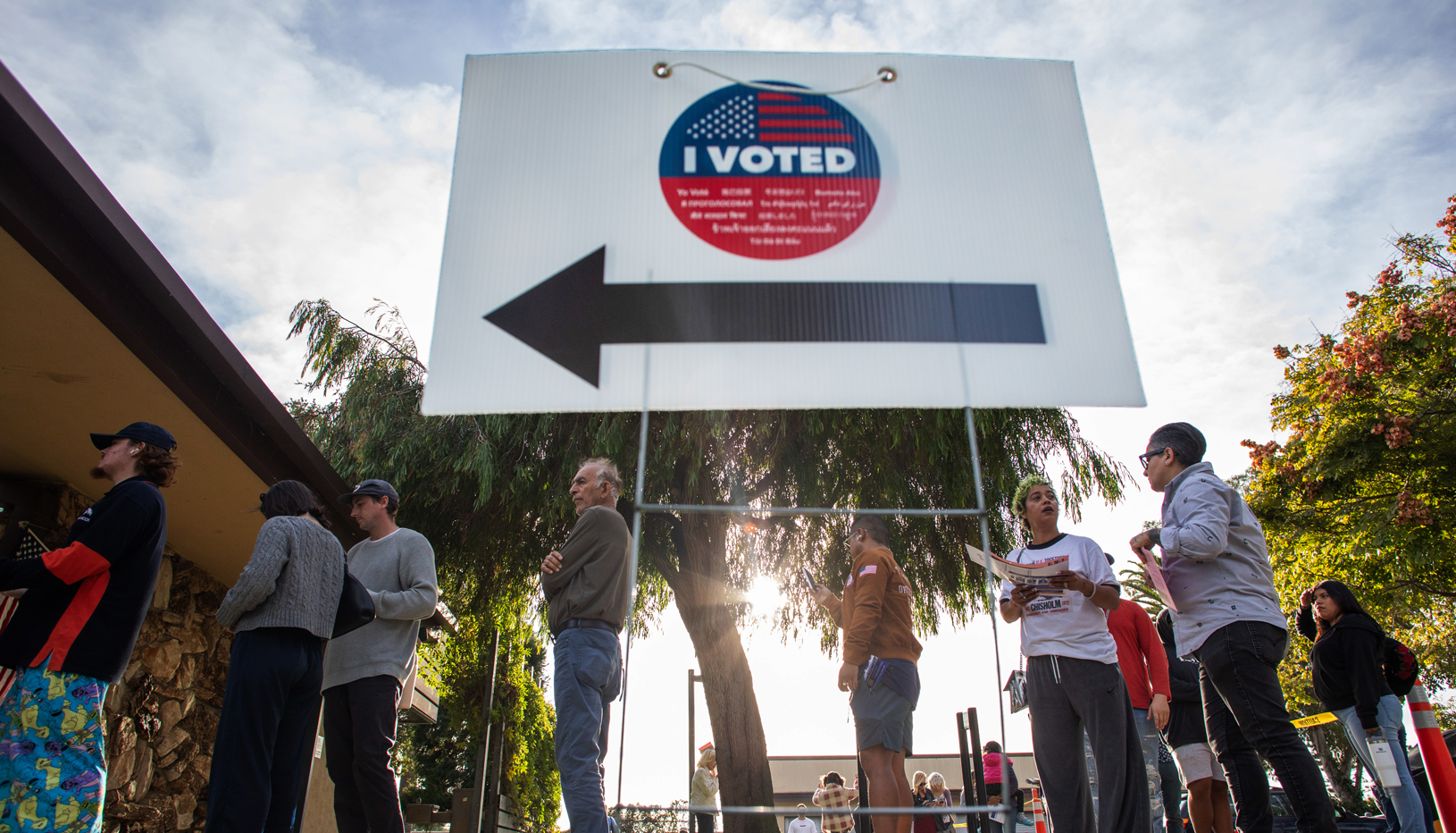The right to vote is at the heart of effective self-government. In the Federalist Papers, Alexander
Hamilton and James Madison laid down a standard for our democracy: “Who are to be the electors of the federal
representatives? Not the rich, more than the poor; not the learned, more than the ignorant; not the haughty heirs of
distinguished names, more than the humble sons of obscurity and unpropitious fortune. The electors are to be the
great body of the people of the United States.”
For over two centuries, we have worked to live up to that ideal, but have consistently fallen short. Many have
struggled, and continue to struggle, for the franchise. The For the People Act would expand and protect this most
fundamental right and bring voting into the 21st century.
Modernize Voter Registration
One in five eligible Americans is not registered to vote, due in many cases to out-of-date and ramshackle voter
registration systems.
We must modernize these systems.
The United States is the only major democracy in the world that requires individual citizens to shoulder the onus of
registering to vote (and reregistering when they move).
In much of the country, voter registration still relies on error-prone pen and paper. Paper forms make mistakes and
omissions more likely, and they increase the risk of inaccurate entry of information into databases by election
officials. A 2012 report by the Pew Center on the States estimated that roughly one in eight registrations in
America is invalid or significantly inaccurate.
These problems decrease turnout. Each Election Day, millions of Americans go to the polls only to have trouble voting
because of registration flaws. Some find their names wrongly deleted from the rolls. Others fall out of the system
when they move.
Outdated registration systems also undermine election integrity. Incomplete and error-laden voter lists create
opportunities for malefactors to disenfranchise eligible citizens. Officials with partisan motives can remove voters
from the rolls because of minor discrepancies, such as spelling mistakes, incomplete addresses, or other missing
information. These systems are also far more expensive to maintain than more modern systems. In Arizona’s Maricopa
County, for example, processing a paper registration costs $0.83, compared to $0.03 for applications processed
electronically.
The Covid-19 pandemic put outdated registration systems under even greater stress. Quarantines, illnesses, and social
distancing reduced access to government offices, voter registration drives were curbed, and the post office was
disrupted in the lead up to the election. The result was a dramatic reduction in voter registration rates in
many state.
Back to top of section
Automatic Voter Registration
Automatic voter registration, a key component of the For the People Act, would transform and modernize our current
registration systems. This bold, paradigm-shifting approach would add tens of millions of voters to the rolls, cost
less, and bolster security and accuracy. It is now the law in nineteen states and the District of Columbia.
It should be the law for the entire country.
Under automatic voter registration (AVR), every eligible citizen who interacts with designated government agencies,
such as the Department of Motor Vehicles (“DMV”), a public university, or a social service agency, is automatically
registered to vote, unless they decline registration. It shifts registration from an “opt-in” to an “opt-out”
process, aligning with people’s natural propensity to choose the default option presented to them. If fully adopted
nationwide, AVR could add as many as 50 million new eligible voters to the rolls – the largest enfranchisement since
the 19th Amendment was ratified.
The policy also requires that voter registration information be electronically transferred to election officials as
opposed to an antiquated infrastructure of paper forms and snail mail. This significantly increases the accuracy of
the rolls and reduces the costs of maintaining them.
California and Oregon became the first states to adopt AVR in 2015. Since then, 17 more states and the District
of Columbia followed—many with strong bipartisan support. In Illinois, for example, the state legislature passed AVR
unanimously, and a Republican governor signed it into law.
The new system has proven extraordinarily successful, increasing registration rates in nearly every state where it
has been implemented. In Vermont, for example, registrations went up by 60 percent after it adopted AVR. In
Georgia, they increased 94 percent. In eight jurisdictions that implemented AVR for the 2018 election, 2.2
million people were registered to vote through AVR, and up to 6 million people had their registration information
updated.
There is strong reason to believe that this reform also boosts turnout. When voters are automatically
registered, they are relieved of an obstacle to voting, thus increasing the likelihood they will show up to the
polls. Automatic registration also exposes more voters to direct outreach from election officials and others.
Indeed, Oregon saw the nation’s largest turnout increase after it adopted AVR. It had no competitive statewide
races, yet the state’s turnout increased by 4 percent in 2016 — 2.5 percentage points
higher than the national average. In the
eight jurisdictions analyzed, AVR resulted in hundreds of thousands of new voters at the polls. Other reforms
that make it easier to register have also increased turnout, such as permitting registrants who move anywhere within
a state to transfer their registration and vote on election day at their new polling place.
These measures send a strong message that all eligible citizens are welcome and encouraged to participate in
our democracy.
Many election officials support AVR because it improves administration and saves money. Virtually every state that
has implemented electronic transfer of registration records from agencies such as the DMV to election officials has
reported substantial savings due to reduced staff hours processing paper, and lower printing and mailing expenses.
Eliminating paper forms improves accuracy, reduces voter complaints about registration problems, and reduces the
need for the use of provisional ballots.
Voters strongly support AVR. According to recent polling, 65 percent of Americans favor it. Michigan and Nevada
adopted AVR this past election by popular referendum, with overwhelming support from voters across the political
spectrum. Alaska voters passed AVR in 2016 with nearly 64 percent of the vote.
The For the People Act sensibly makes AVR a national standard, building on past federal reforms to the voter
registration system. Critically, the Act requires states to put AVR in place at a wide
variety of government agencies beyond the DMV, including those that administer Social Security or provide social
services, as well as higher education institutions. It requires a one-time “look back” at agency records to register
eligible individuals who have previously interacted with government agencies. It protects voters’ sensitive
information from public disclosure.
Critically, AVR also includes multiple safeguards to ensure that ineligible voters are not registered and to prevent
people from being punished for innocent mistakes. The government agencies designated for AVR regularly collect
information about individuals’ citizenship status and age, and they are already required to obtain an affirmation of
U.S. citizenship during the registration transaction. Before anyone is registered, agencies must inform individuals
of eligibility, the penalties for illegal registration, and offer an opportunity to opt out of registrations.
Election officials, too, are required to send individuals a follow-up notice by mail. Indeed, election officials
report that AVR enhances the accuracy of the rolls.
Back to top of section
Same-Day and Online Registration
The For the People Act would boost voter participation further by establishing same-day and online registration.
This would eliminate cumbersome paperwork and waiting periods. With a few clicks or a trip to the polls
with proper documentation, eligible voters would be able to cast a ballot.
Same-day registration (SDR) complements AVR, allowing eligible citizens to register and vote on the same day. It is
particularly useful to people who have not interacted with government agencies or whose information has changed
since they last did so. And because it allows eligible Americans to vote even if their names are not on the voter
rolls, SDR safeguards against improper purges, registration system errors, and cybersecurity attacks.
SDR has been used successfully in several states since the 1970s. Today, 21 states and the District of Columbia
have passed some form of same day registration, either on election day, during early voting, or both.
SDR has been shown to boost voter turnout by 5 to 7 percent.
More than 60 percent of Americans support it.
The For the People Act also requires states to offer secure and accessible online registration. At a time when
many Americans do everything from banking to reviewing medical records online, voters want this convenient method of
registration. The online registration provisions in the For the People Act would let all voters register, update
registration information, and check registrations online. This option has been especially critical during the
Covid-19 pandemic, when voters were prevented from registering by other means. The act would also ensure that
these benefits are available to citizens who do not have drivers licenses. Online registration is especially
critical as a response to the Covid-19 pandemic, which may keep some voters from registering by other means.
In addition to convenience and safety, online registration saves money and improves voter roll accuracy. Processing
electronic applications is a fraction of the cost of processing paper applications, and election officials report
that letting voters enter their own information significantly reduces the likelihood of incomplete applications and
mistakes. It is not surprising, therefore, that online registration is incredibly popular and has spread rapidly. In
2010, only six states offered online voter registration. Now, 39 states and the District of Columbia do.
Taken together, AVR, SDR, and online registration would ensure that no eligible voter is left out of our democratic
process. It is time to bring these reforms to the whole country.
Back to top of section
Protect Against Flawed Purges
Modernizing our voter registration system means not only registering all eligible voters, but also making sure those
eligible voters stay on the voter rolls. Voter purges — the large-scale deletion of voters’ names from the rolls
often using flawed data — are on the rise. In 2018, they were a key form of vote suppression used by election
officials around the country.
We should address this growing threat by curbing improper efforts to remove eligible voters.
Purge activity has increased at a substantially greater rate in states that were subject to federal oversight under
the Voting Rights Act of 1965 (VRA) prior to the Supreme Court’s decision in Shelby County v. Holder. The
Brennan Center has calculated that more than 17 million voters were purged from the polls nationwide between 2016
and 2018. Over the same period, the median purge rate in jurisdictions previously covered by the VRA was 40 percent
higher than the purge rate in jurisdictions that were not covered. Georgia, for example, purged twice as many
voters— 1.5 million— between the 2012 and 2016 elections as it did between 2008 and 2012. The state also saw most of
its counties purge more than 10 percent of their voters within the past two years alone. Texas purged
363,000 more voters between 2012 and 2014 than it did between 2008 and 2010. We ultimately found that 2 million
fewer voters would have been purged between 2012 and 2016, and 1.1 million fewer between 2016 and 2018, if
jurisdictions previously subject to preclearance had purged at the same rate as other jurisdictions.
Incorrect purges disenfranchise legitimate voters and cause confusion and delay at the polls. And purge practices can
be applied in a discriminatory manner that disproportionately affects minority voters. In particular, matching voter
lists with other government databases to ferret out ineligible voters can generate racially discriminatory results
if the matching is done without adequate safeguards. Black, Asian American, and Latino voters are much more likely
than white voters to have one of the most common 100 last names in the United States, resulting in a higher rate of
false positives.
The For the People Act creates strong protections against improper purges. It puts new guardrails on the use of
interstate databases (such as the now-defunct and much-maligned Crosscheck system) that purport to identify voters
that have reregistered in a new state, but that have been proven to produce deeply flawed data. It prohibits election officials from relying on a citizen’s failure to vote in an
election as reason to remove them from the rolls. And it requires election officials to provide timely notice to
removed voters, as well as an opportunity to remedy their registration before an election.
Back to top of section
Restore the Voting Rights Act
The For the People Act contains an express commitment to restore the full protections of the Voting Rights Act,
which the U.S. Supreme Court crippled with its ruling in Shelby County v. Holder in 2013. VRA restoration is accomplished through separate legislation, the Voting Rights
Advancement Act of 2019, or H.R. 4, which passed the House of Representatives on December 6, 2019.
As recent experience makes clear, restoration of the VRA—the engine of voting equality in our country—is critical.
The VRA is widely regarded as the single most effective piece of civil rights legislation in our nation’s history.
As recently as 2006 it won reauthorization with overwhelming bipartisan support.
But in the absence of a full-force VRA, the 2018 midterm elections were marred by the most brazen voter suppression
seen in decades.
Election officials executed large-scale voter purges and closed polling places and early voting sites, especially in
minority neighborhoods.
Burdensome voter ID requirements targeted minority citizens. Unnecessarily
strict registration rules, like Georgia’s “exact match” policy, put 53,000 voter registrations on hold, the
overwhelming majority of whom were Black people, Latino, and Asian American voters.
And many absentee ballots were suspiciously rejected.
A fully functional VRA would have prevented many of these abuses. We must commit to restoring the Act to ensure that
all Americans have a voice in our democracy.
For nearly five decades, the linchpin of the VRA’s success was the Section 5 preclearance provision. It required
certain states with a history of discriminatory voting practices to obtain approval from the federal government
before implementing any voting rules changes. Section 5 deterred and prevented discriminatory changes to voting
rules right up until the time the Supreme Court halted its operation. Between 1998 and 2013 alone, Section 5 blocked
86 discriminatory changes (13 in the final eighteen months before the Shelby County ruling), caused
hundreds more to be withdrawn after a Justice Department inquiry, and prevented still more from being advanced
because policymakers knew they would not pass muster.
Shelby County eviscerated Section 5 by striking down the “coverage formula” that determined which states
were subject to preclearance. That resulted in a predictable flood of discriminatory voting rules, contributing to a
now decade-long trend of states adopting new restrictions, which the Brennan Center has documented extensively.
Within hours of the Court’s decision, Texas announced that it would implement what was then the nation’s strictest
voter identification law — a law that had previously been denied preclearance because of its discriminatory impact.
Shortly afterward, Alabama, Arizona, Florida, Mississippi, North Carolina, and Virginia also moved ahead with
restrictive voting laws or practices that previously would have been subject to preclearance.
In the years since, federal courts have repeatedly found that new laws passed after Shelby County made
it harder for minorities to vote, some intentionally so.
Section 2 of the VRA — which prohibits discriminatory voting practices nationwide and permits private parties and the
Justice Department to challenge those practices in court — remains an important bulwark against discrimination. But
Section 2 lawsuits are not a substitute for pre-clearance. They are far more lengthy and expensive, and often do not
yield remedies for impacted voters until after an election (or several) is over.
H.R. 4 updates the VRA’s coverage formula to restore the Act’s full force. It is backed by a thorough legislative
record documenting the recent history of voter suppression in U.S. elections. While H.R. 4 passed in the House of
Representatives, it has yet to be taken up by the Senate. This crucial legislation must become law in order to
fortify the right to vote and the integrity of our elections. The For the People Act commits us to this goal.
Back to top of section
Restore Voting Rights to People with Prior Convictions
Nationally, state laws deny 4.5 million citizens the right to vote because of a criminal conviction — 3.2 million of
whom are no longer incarcerated. The laws that disenfranchise them originate primarily from the Jim Crow era,
shutting people who work, pay taxes, and raise families out of our political system.
We should restore voting rights to Americans living in the community. This would strengthen our communities, offer a
second chance to those who have served their time, and remove the stain of a policy born out of Jim Crow.
Disenfranchisement laws vary dramatically from state to state. In states like Vermont and Maine, people currently in
prison are allowed to vote. Some states distinguish between different types of felonies, states that treat
repeat offenders differently. Jurisdictions also have varying rules on what parts of a sentence must be completed
before rights are restored, such as paying off debt or other legal financing obligations.
Navigating this patchwork of state laws causes confusion for everyone — including election officials and prospective
voters — about who is eligible to vote. The real-world result is large-scale disenfranchisement not only of
ineligible persons but also of potential voters who are eligible to register but wrongly believe they are barred
from doing so by a prior conviction.
Regardless of their particular terms, criminal disenfranchisement laws are rooted in discriminatory practices
that disproportionately impact Black voters. In 2016, 1 in 13 voting-age Black citizens could not vote, a
disenfranchisement rate more than four times that of all other Americans. This unequal impact is no accident—many states’ criminal disenfranchisement laws are rooted in
19th-century attempts to evade the Fifteenth Amendment’s mandate that Black men be given the right to vote.
This disproportionate impact on people of color means that all too often, communities are shut out of our democracy.
Disenfranchisement laws have a negative ripple effect beyond those people within their direct reach. Research
suggests that these laws may affect turnout in neighborhoods with high incarceration rates, even among citizens who
are eligible to vote.
This is not surprising; Children learn civic engagement habits from their parents. Neighbors encourage each
other’s political participation. And when a significant portion of a community is disenfranchised, it sends a
damaging message to others about the legitimacy of democracy and the respect given to their voices.
The For the People Act adopts a simple and fair rule: if you are out of prison and living in the community, you
get to vote in federal elections. It also requires states to provide written notice to individuals with criminal
convictions when their voting rights are restored.
These changes would have a profoundly positive impact on affected citizens and society. We all benefit from the
successful reentry of formerly incarcerated citizens into our communities. Restoring their voting rights makes clear
that they are entitled to the respect, dignity, and responsibility of full citizenship.
Voting rights restoration also benefits the electoral process by reducing confusion and easing the burdens on
elections officials to determine who is eligible to vote. If every citizen living in the community can vote,
officials have a bright line rule to apply. This clear rule also eliminates one of the principal bases for erroneous
purges of eligible citizens from the voting rolls.
In past elections, states have botched attempts to remove Americans with past criminal convictions from the rolls,
improperly removing many eligible citizens. For example, in 2016 thousands of Arkansans were purged because of
supposed felony convictions— but the lists used were highly inaccurate, and included many who had never committed a
felony, or who had had their voting rights restored.
For these reasons, rights restoration is immensely popular regardless of political views. In November 2018, 65
percent of Florida voters passed a ballot initiative restoring voting rights to 1.4 million of their fellow
residents, with a massive groundswell of bipartisan support. Unfortunately, the state legislature significantly
undercut the will of the people by conditioning rights restoration on the payment of criminal justice fees and
fines, a move that was later upheld by a federal court of appeals. Louisiana, through bipartisan legislation,
restored voting rights to nearly 36,000 people convicted of felonies. In December of 2019, newly-elected Governor
Andy Beshear signed an executive order restoring the vote to some 140,000 Kentuckians. Shortly after, the New Jersey
legislature restored voting rights to 80,000 people on parole or probation. Governor Kim Reynolds, Republican of
Iowa, recently signed an executive order that restores voting rights to Iowans who have completed their sentences.
And over the past two decades, 18 states have restored voting rights to segments of the population.
Congress has the authority to act. Many state criminal disenfranchisement laws were enacted with a racially
discriminatory intent and have a racially discriminatory impact, violating the Fourteenth and Fifteenth Amendments,
which vest Congress with broad power to enforce their protections. Congress can also act under its Article I power
to set the rules for federal elections. The Supreme Court has previously upheld the use of this power in analogous
circumstances, such as when Congress lowered the voting age to 18 in federal elections. It is time to finally put one of the most troubling legacies of the Jim Crow era behind us.
Back to top of section
Strengthen Mail Voting Systems
The For the People Act would also create a baseline standard for access to mail voting in
federal elections. The 2020 election season, which took place during a global pandemic, made clear that Americans
need different options for how to vote, including the option to vote by mail, in order to accommodate the needs of a
diverse electorate. What’s more: mail voting is increasingly popular with voters. Even before the pandemic, roughly
one-quarter of American voters cast mail ballots in the 2014, 2016, and 2018 presidential elections. That percentage shot up this past November, as more than 65 million Americans successfully and securely
voted by mail.
Increased mail voting undoubtedly contributed to the surge in participation in the 2020 elections, which
reached 66.7 percent of the voting-eligible population (over 159 million people), the highest rate in over a
century.
This surge in mail voting was enabled by significant expansions of access to mail voting in many states. These
reforms included broadening the scope of who could vote by mail; automatically mailing ballot applications or
ballots to eligible voters; implementing better processes for voters to receive notice of and cure defective mail
ballots; and extending ballot return deadlines, among other critical reforms.
Unfortunately, although the 2020 election demonstrated the value of mail voting, it also exposed the deficiencies and
inequities of mail voting systems in many states. First, many of the changes that increased access to mail voting
were made through temporary legislation or timebound executive orders that expired after the 2020 general election.
Second, even in the face of the pandemic, a number of states continued to place unreasonable restrictions on the
ability to vote by mail. For example, five states continued to require voters to provide an excuse for not voting in
person. That was down from 17 states the previous election cycle, but only 1 of the states that eliminated excuse
requirements passed legislation to do so permanently.
In addition, eight states still required voters to obtain a witness signature or notary to cast a mail ballot. And in
28 states, ballots could still be rejected for technical defects unrelated to voter eligibility, without any notice
or opportunity to correct the issue after Election Day. Three closely contested states — Iowa, Ohio, and Texas — also limited the use of secure ballot drop boxes
for voters to submit their absentee ballots. Similarly, Pennsylvania tossed thousands of votes from eligible voters
who did not place their absentee ballots in a so-called “privacy sleeve” (an extra envelope that encases a ballot
within a mailing envelope). Barriers to mail voting had a disproportionately negative impact on Black and brown voters. And they would have likely disenfranchised far more people had voter mobilization not been so high.
In the face of ongoing efforts to unreasonably limit mail voting options, the For the People Act would make concrete
improvements to guarantee all voters reasonable, secure access to this method for casting a ballot.
To start, the act requires states to give every voter the option to vote by mail. It also removes a key barrier to
accessing mail voting by requiring prepaid postage for all election materials, including registration forms and
ballot applications. In addition to making it easier to request a mail ballot, the act simplifies the process of
returning the ballot by requiring states to provide drop boxes for federal races, as well as by clarifying that all
voted mail ballots should be carried free of postage. In states where most or all voters vote by mail, easy access
to drop boxes is considered a best practice, as drop boxes are secure and convenient, enabling a speedier ballot
delivery than the postal service. In 2016, a majority of voters in Colorado (73 percent), Oregon (59 percent), and
Washington (65 percent), — all “vote at home” states — chose to return their ballots to a physical location rather
than send them via mail.
The act would also require states to provide voters with a way to track their mail ballot and confirm its receipt.
The ability to track a ballot is important for election security, as election officials can locate lost ballots.
Likewise, it ensures that every valid vote is counted by empowering voters to confirm the arrival of their ballot.
The For the People Act allows states to access funds allocated in
the Help America Vote Act to develop such a program.
Many election officials support the expansion of mail voting. In addition to easing access to the ballot, increased mail voting lightens the administrative burden on
our in-person voting systems. If more people can vote early by mail, that means fewer voters have to wait in line at
the polls. Election officials and experts agree that mail voting is highly secure. All mail ballots are marked by
hand, which means there is a paper trail to enable effective post-election audits. Enhanced mail voting can lead to a smoother election experience for voters and officials alike.
Back to top of section
Institute Nationwide Early Voting
Every year, Americans across the country struggle to get to the polls on Election Day. Full-time jobs, childcare
needs, disabilities, and other factors prevent them from traveling to their polling place to cast a ballot.
Sometimes, even after making the time and the journey, long lines cause them to turn away. We should alleviate this
problem by guaranteeing a minimum two-week period for early voting in federal elections.
Holding elections on a single workday in mid-November is a relic of the 19th century. It was done for the convenience
of farmers who had to ride a horse and buggy to the county seat in order to cast a ballot.
This no longer works for millions across the country. Early voting helps to modernize the electoral process to make
it easier for hardworking Americans to get to the polls. It also helps to minimize crowding at polling places.
Forty-five states and the District of Columbia offered some opportunity to vote in person before Election Day in
2020. More than a dozen of those states offer early voting for a period comparable to or greater than the two-week
period leading to Election Day required by the For the People Act.
But the absence of a national standard means that some states have few or inconsistent early voting hours. Other
states have engaged in politicized cutbacks to early voting. Over the past decade, multiple states
have reduced early voting days and/or sites used disproportionately by Black voters, such as by
eliminating early voting on the Sunday before Election Day. Federal courts have struck down these kinds of
early voting cutbacks in North Carolina and Wisconsin because they were intentionally discriminatory.
The For the People Act will make voting more manageable by requiring that states provide two weeks of early
voting and equitable geographic distribution of early voting sites. A guaranteed early voting period will reduce
long lines at the polls and ease the pressure on election officials and poll workers on Election Day. It will also
make it easier for election officials to spot and solve problems like registration errors or voting machine glitches
before they impact most voters. For these reasons, election officials report high satisfaction with early voting.
Early voting is popular with voters too, with study after study showing a significant positive effective on voter
satisfaction.
Early voting is a critical element of a convenient and modern voting system. A national standard is long overdue.
Back to top of section
Preventing Unreasonable Wait Times at the Polls
The For the People Act will require states to make voting more accessible by cutting down
on long wait times at the polls.
Far too often, voters arrive at their precincts only to find out that they must wait in unreasonably long lines to
cast a ballot. In the 2020 midterms, for example, voters in metropolitan areas across the country — from Atlanta to
Philadelphia to Milwaukee — were forced to wait in hours-long lines at the polls. A study of the 2018 midterm elections estimated that 3 million voters waited longer than half an hour to
vote (and many waited much longer). The unconscionably (but all-too-familiar) long lines in the 2012 election prompted President Obama to
institute a bipartisan commission to develop recommendations to reduce wait times. Long lines are inconvenient for all voters, but they are an especially heavy burden for voters with
disabilities, those who may be missing work to vote, and those with caregiving responsibilities. For too many, a
long line can mean a lost vote.
Long lines do not affect all voters equally; a growing body of research shows that they disproportionately
plague Black and Latino voters. A Brennan Center
study of the 2018 election found that Black and Latino voters waited on average 45 and 46 percent longer than white
voters respectively. These racial disparities persisted in
the 2020 primary elections, in which the longest wait times were seen in jurisdictions with the largest
concentrations of nonwhite voters.
Excessive wait times are an avoidable problem. The For the People Act sets a legal standard that no individual shall
be required to wait longer than 30 minutes to cast a ballot. (This was the standard recommended by the bipartisan
Presidential Commission on Election Administration in 2013.) Additionally, it directs states to equitably allocate
voting systems, poll workers, and other election resources to ensure fair and equitable wait times for all voters.
And it directs the Election Assistance Commission and the comptroller general to study the places that have
struggled the most with long lines to ensure that the most effective practices can be put in place.
Back to top of section
Protect Against Deceptive Practices
Attempts to suppress voting through deception and intimidation remain all too widespread. Every election cycle, these
tactics are documented by journalists and nonpartisan Election Protection volunteers.
This is not a new problem, but social media platforms make the mass dissemination of misleading information easy and
allow for perpetrators to target particular audiences with disturbing precision. In 2016, they were especially
prevalent, and not just on the part of domestic actors. Russian operatives also engaged in a concerted
disinformation and propaganda campaign over the internet that aimed, in part, to suppress voter turnout, especially
among Black voters.
We should increase protections against such efforts.
While federal law already prohibits voter intimidation, fraud, and intentional efforts to deprive others of their
right to vote, existing laws have not been strong enough to deter misconduct. Moreover, no law specifically targets
deceptive practices, nor is there any authority charged with investigating such practices and providing voters with
corrected information.
The For the People Act protects voters from deception and intimidation in three ways. First, it increases
criminal penalties for false or misleading statements, as well as intimidation, aimed at impeding or preventing a
person from voting or registering to vote. Second, it empowers citizens to go to court to stop voter deception.
Third, it blunts the effect of deceptive information by requiring designated government officials to disseminate
accurate, corrective information to voters. These provisions will give federal law enforcement agencies and private
citizens the opportunity to stop bad actors from undermining our elections.
Back to top of section






